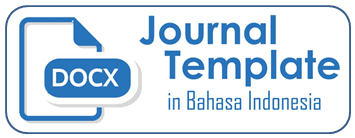Recomended Journal:
Journal Universitas Nahdlatul Ulama Cirebon
Menu:
Template:

This section of evaluation criteria of the magazine IJPESS has the objective of establishing and clearly presenting the measures by which the evaluation processes of the different articles received are governed.
It is not only addressed to the members of the Scientific Committee of our journal, but also to the authors. We intend it to be a practical guide to the parameters under which the texts submitted for possible publication are evaluated.
The spirit that guides the work of the Scientific Committee of "Challenges" lies not only in evaluating the quality of the texts to be published, but also and, fundamentally, in contributing to the advancement of research in the disciplines involved in the study and development of physical-sports activity, through reading and academic discussion of the works presented for evaluation. Our purpose is to continue contributing, as far as possible, to the advancement of the disciplines involved, from the academic field.
Below is a brief summary of some interesting aspects to facilitate the work of the Scientific Committee.
Scientific in nature: basic and/or applied research work.
Dissemination and/or empirical didactic experiences. Exchange of proposals and experiences developed and researched.
Theoretical reviews (proposed or requested, previously, by members of the Scientific Committee with preference for those who are committed to critical research issues and discuss controversial approaches.
It should be taken into account that according to the journal quality criteria adopted by our journal since 2006, the percentage of theoretical review articles, out of the total published per issue, may not be higher than 25%, that is, at least 75%. They must be original articles that communicate research results. Likewise, at least 80% of the authors must be external to the editorial committee and virtually unrelated to the editorial organization of the journal.
Published:

This work is licensed under a Creative Commons Attribution-NonCommercial-ShareAlike 4.0 International License.
